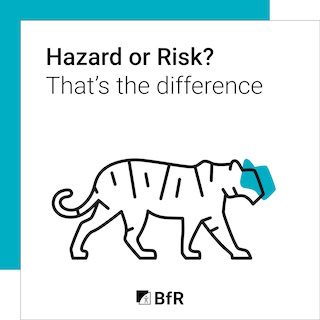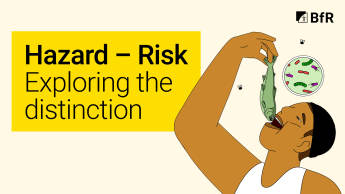Why a tiger is a hazard, but not necessarily a risk - The difference between risk and hazard
Terms such as danger, hazard or risk are often used interchangeably in everyday language. A precise distinction is rarely made. In consumer health protection, however, it is particularly important to use the terms hazard and risk in a targeted and differentiated way. For example, whether a substance poses a hazard or a risk, can have a considerable impact on how it is handled and, in the field of scientific risk assessment, on the recommendation to implement appropriate risk mitigation measures.
According to the European Transparency Regulation, which came into force in 2021, efforts should be made to better explain the difference between hazard and risk in risk communication.
Infographic about hazard and risk

Click to open (PDF file,178.36 KB)
In the following, the German Federal Institute for Risk Assessment (BfR) has presented the most important differences between the terms hazard and risk and illustrated them with examples.

